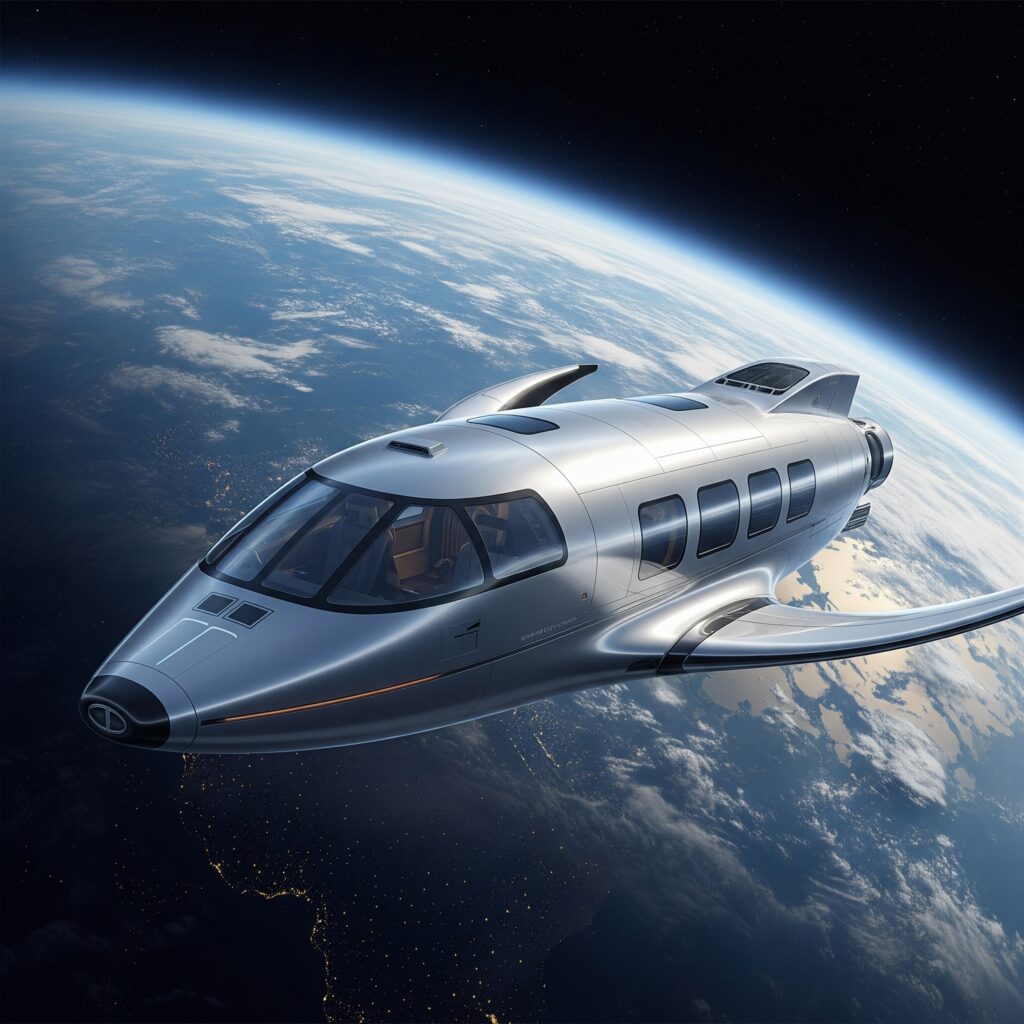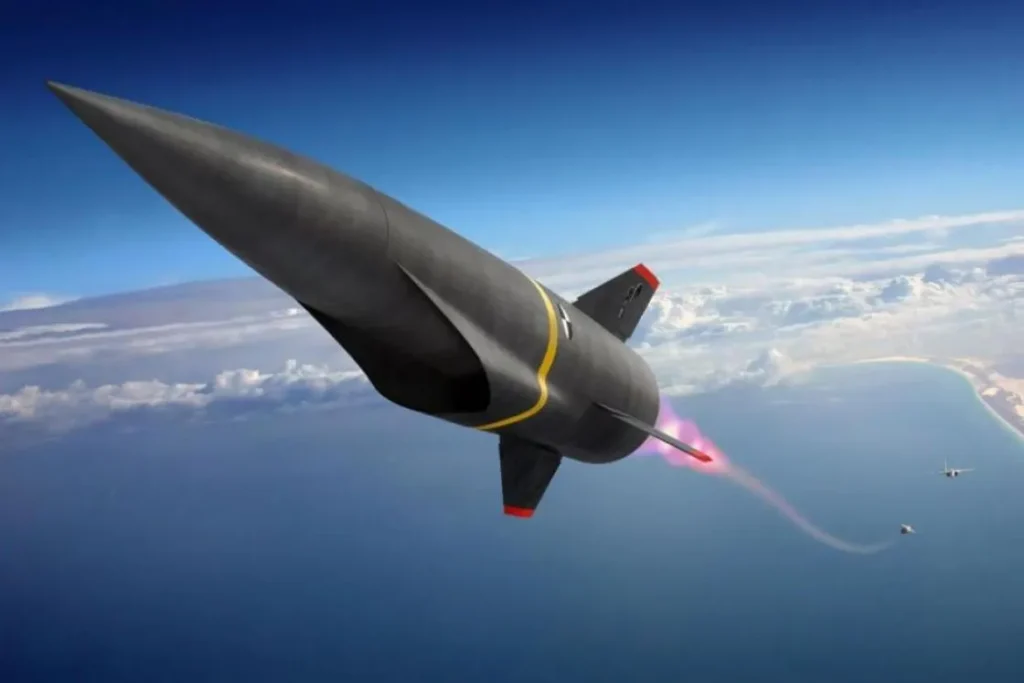Space Tourism: Journeying Beyond Earth’s Horizon
Introduction
For centuries, humanity has gazed upon the stars with an unyielding sense of wonder and aspiration. What was once confined to the realm of science fiction, the exclusive domain of government agencies, and the extraordinary feats of a select few astronauts, is now rapidly transitioning into a tangible reality for a broader, though still privileged, segment of the population. We are witnessing the dawn of a new era in space exploration, one driven increasingly by private enterprise and commercial ambition. Space tourism, once a distant dream, is now a burgeoning industry, offering experiences from fleeting suborbital hops to multi-day stays aboard orbital habitats. Parallel to this, commercial space exploration is pushing the boundaries of what’s possible, eyeing lunar resources, Martian settlements, and in-space manufacturing as viable economic ventures. This article will delve into the exciting landscape of space tourism and commercial space exploration, examining their burgeoning opportunities, the profound economic and societal impacts they promise, the significant challenges they face, and our collective vision for a future where the cosmos becomes a more accessible frontier for all.
The Resurgence of Space Exploration: A Commercial Frontier
The narrative of space exploration has historically been dominated by governmental giants like NASA, Roscosmos, and ESA, driven primarily by scientific research, geopolitical rivalries, and national prestige. While these agencies continue to play a crucial role, the 21st century has ushered in a transformative shift: the rapid emergence of the private space industry. Companies like SpaceX, Blue Origin, and Virgin Galactic have revolutionized access to space by developing reusable rocket technology, significantly reducing launch costs, and innovating at a pace previously unimaginable.
This privatization is not merely about launching satellites; it’s about creating a vibrant new space economy that fosters competition, drives innovation, and fundamentally reshapes humanity’s relationship with the cosmos. This shift has unlocked new capabilities, allowing for more frequent launches, the deployment of mega-constellations of satellites for global connectivity (e.g., Starlink), and the development of vehicles capable of transporting private citizens and cargo to various orbital destinations, including the International Space Station and beyond. This commercial impetus is democratizing space access, transforming it from a geopolitical arena into a dynamic marketplace where space tourism is a flagship offering.
Space Tourism: Experiences Beyond Imagination
The concept of space tourism, once exclusively imagined in futuristic novels and films, has now moved from the realm of fantasy to an aspirational, albeit expensive, reality. This nascent industry offers several distinct tiers of experiences, each pushing the boundaries of human endeavor and technological capability.
- Suborbital Flights: A Glimpse of the Stars. These are short journeys that take passengers to the edge of space (typically above the Kármán line, around 100 km or 62 miles altitude) where they experience a few minutes of exhilarating weightlessness. Passengers witness the breathtaking curvature of the Earth against the blackness of space before returning safely. Companies like Virgin Galactic with their SpaceShipTwo and Blue Origin with their New Shepard rocket are leading this segment, providing a relatively brief but profoundly transformative experience. This type of space tourism is currently the most accessible for private citizens.
- Orbital Flights: Circling Our Home Planet. More complex and significantly longer, orbital flights involve circling the Earth for multiple days. This level of space tourism has historically been achieved via missions to the International Space Station (ISS), with companies like Space Adventures facilitating trips for ultra-wealthy individuals on Russian Soyuz spacecraft. More recently, SpaceX’s Crew Dragon has opened new pathways, notably with its Inspiration4 mission, the first all-civilian orbital spaceflight. These experiences offer prolonged weightlessness, stunning views of Earth from orbit, and a deeper immersion in the space environment, making orbital space tourism a truly unique adventure.
- Future Lunar and Deep Space Journeys: The Ultimate Frontier. While still in developmental stages, the ultimate dream of space tourism extends to the Moon and beyond. SpaceX’s Starship is being developed with potential lunar and Martian tourism in mind, including its ambitious dearMoon project aiming for a circumlunar flight with a crew of artists. Companies like Axiom Space are also planning commercial space stations that could eventually host tourists for extended stays, offering amenities and unparalleled views. This represents the next frontier of human leisure and the pinnacle of space tourism, albeit with considerable technological and financial hurdles still to overcome.
Economic Impetus and Boundless Opportunities
The burgeoning space tourism and commercial space exploration sectors are not just about thrilling adventures; they are formidable economic engines poised to generate substantial wealth and create entirely new industries.
- Massive Job Creation and Industry Expansion. The growth of commercial space requires a vast and diverse workforce. This includes highly specialized engineers, rocket scientists, software developers, mission controllers, and astronauts, but also extends to manufacturing, logistics, marketing, hospitality, and regulatory roles. The demand for skilled labor is stimulating education and training programs globally, fostering a new generation of space-focused professionals. This creates high-value jobs that contribute significantly to national GDPs and fuel economic growth.
- Surging Investment and Capital Flow. Private investment in space companies has surged dramatically, with venture capitalists and private equity firms pouring billions into startups and established players. This capital fuels research and development, manufacturing capabilities, and crucial infrastructure projects, driving rapid innovation and technological advancement. The public offerings (IPOs) and market valuations of leading space companies demonstrate strong investor confidence in the long-term viability and profitability of this sector, significantly boosting the overall space economy.
- Emergence of New Markets and Spin-off Technologies. Commercial space is opening up entirely new markets. This includes space mining for rare earth minerals and water ice on asteroids or the Moon, which could support future deep-space missions and reduce Earth’s resource dependency. In-space manufacturing – producing materials or components in microgravity that are impossible to create on Earth – is another groundbreaking area. Furthermore, technologies developed for space often have profound terrestrial applications, known as “spin-offs.” Innovations in lightweight materials, advanced propulsion, life support systems, and robotics for space missions can find uses in industries like aviation, medicine, and energy, creating unforeseen economic value right here on Earth. For instance, advanced water purification systems developed for space are now used in remote communities.
- Boost to Existing Industries. Traditional industries like aerospace, telecommunications, and even hospitality and insurance are finding new avenues for growth through commercial space. Launch services, satellite broadband (e.g., Starlink, OneWeb), and specialized insurance for space tourism missions are just a few examples. The demand for ground infrastructure, training facilities, and launch sites also provides economic stimulus to regional economies, creating a ripple effect.
- Valuable Data and Earth Observation. The proliferation of commercial satellites provides unprecedented amounts of data on Earth’s climate, weather patterns, agricultural health, and critical infrastructure. This data is invaluable for various industries, from environmental monitoring and disaster response to urban planning and financial analytics, creating a lucrative data economy and enhancing our ability to manage our home planet.
Environmental and Societal Responsibilities
While offering immense promise and transforming the landscape of space tourism, the expansion of commercial space exploration also brings critical environmental and societal considerations that demand careful management and proactive solutions.
- Mitigating Space Debris. With more launches and satellites, the issue of space debris (inactive spacecraft, fragments from collisions, and other human-made objects orbiting Earth) becomes increasingly pressing. Collisions can create exponentially more debris, posing a significant threat to operational satellites, the International Space Station, and future missions. Sustainable practices for deorbiting spent satellites, designing for end-of-life disposal, and developing active debris removal technologies are crucial to ensuring the long-term viability of space activities.
- Addressing the Environmental Impact of Launches. Rocket launches, particularly those using traditional propellants, release greenhouse gases and other pollutants into the upper atmosphere. While the current volume is relatively small compared to other terrestrial industries, a projected increase in launches necessitates urgent research into cleaner propulsion methods, such as methane or hydrogen fuels, and sustainable fuel sources to mitigate long-term environmental effects on Earth’s atmosphere.
- Promoting Accessibility and Equity. Currently, space tourism is an exclusive luxury, accessible only to the ultra-wealthy. Concerns arise about perpetuating inequality and the potential for a “two-tiered” future for humanity if space becomes accessible only to a select few. Efforts to reduce costs and broaden access, perhaps through government-private partnerships, philanthropic initiatives, or educational programs aimed at inspiring diverse populations, are essential to ensure the benefits of space exploration are more widely shared for long-term societal benefit.
- Establishing Resource Utilization Ethics. As commercial entities increasingly eye lunar and asteroid resources for water ice, rare earth minerals, and other valuable materials, clear ethical frameworks and robust international regulations are desperately needed. These frameworks must govern resource extraction, ensure sustainability, and prevent conflicts over extraterrestrial territories, setting precedents for peaceful and equitable development in space.
- Inspiring the Next Generation through STEM. Beyond the direct economic and technological benefits, the visible advancements in space tourism and commercial space exploration inspire a new generation to pursue challenging and rewarding careers in science, technology, engineering, and mathematics (STEM). This “Apollo effect” is crucial for fostering innovation, maintaining a competitive edge in advanced industries, and addressing future global challenges.
- Fostering Global Collaboration and Diplomacy. The increasingly commercial nature of space necessitates new forms of international collaboration and diplomacy. Governments, private companies, and international bodies must work together to establish unified regulations, ensure safe operations, promote responsible resource utilization, and foster peaceful coexistence in the final frontier. Organizations like the United Nations Office for Outer Space Affairs (UNOOSA) are pivotal in this regard.
Overcoming the Hurdles: Challenges of Implementation
Despite the exhilarating pace of innovation, the journey to a fully realized commercial space sector and widespread space tourism is fraught with significant challenges that require ongoing dedication and ingenuity.
- Exorbitant Cost and Limited Accessibility. The most prominent barrier remains the astronomical cost of space travel. While prices are gradually dropping due to reusable rocket technology and increased competition, they are still prohibitively expensive for the average person. Further cost reduction requires sustained technological breakthroughs, achieving true economies of scale in manufacturing, and developing innovative business models that can make space more affordable.
- Ensuring Utmost Safety and Robust Regulation. Ensuring the safety of private citizens traveling to space is paramount. Developing and enforcing rigorous safety standards, establishing reliable emergency procedures for various scenarios, and creating comprehensive regulatory frameworks are critical. Governments globally are grappling with how to effectively regulate a rapidly evolving private industry that operates beyond traditional terrestrial boundaries, balancing innovation with passenger protection.
- Overcoming Technological Hurdles. While reusable rockets are a game-changer, more advanced propulsion systems (e.g., nuclear thermal propulsion for faster deep-space travel), more efficient closed-loop life support systems for extended missions, and advanced robotics for in-space operations are still under intensive development. The harsh environment of space – characterized by extreme temperatures, vacuum, and harmful radiation – also poses significant challenges for long-duration human presence and the longevity of spacecraft.
- Developing Essential Space Infrastructure. Building orbital hotels, lunar habitats, and deep-space refueling stations requires massive investment and sophisticated engineering. The infrastructure to support a vibrant space economy, including robust communication networks and precise navigation systems beyond Earth orbit, is still in its infancy and represents a colossal undertaking.
- Addressing Psychological and Physiological Effects. The long-term effects of microgravity and radiation on the human body are well-studied for professional astronauts but remain a significant concern for space tourism participants with varying health conditions and shorter, less intensive training periods. Psychological well-being during extended isolation and confinement in space is also a critical factor that needs careful consideration and mitigation strategies.
- Managing Public Perception and Liability. Overcoming public apprehension regarding space tourism safety, particularly after potential incidents, and managing the complex legal and insurance liabilities of accidents or failures in a new, high-risk industry are crucial for public acceptance and continued investment in the sector. Clear liability frameworks are still being debated internationally.
Key Players Driving the New Space Era
The commercial space sector is a dynamic ecosystem of innovative companies, each contributing significantly to the new era of space tourism and exploration:
- SpaceX (USA): Led by Elon Musk, SpaceX is perhaps the most well-known, revolutionizing space access with its reusable Falcon 9 rockets and Crew Dragon spacecraft. It’s pushing boundaries with the Starship development for lunar and Martian missions, aiming for full reusability and significantly lower costs, which is pivotal for future space tourism. Its Starlink constellation is also providing global satellite internet, a crucial infrastructure for a space-faring civilization. For more details, visit SpaceX.
- Blue Origin (USA): Founded by Jeff Bezos, Blue Origin focuses on making space travel routine and affordable. Its New Shepard rocket is a suborbital vehicle actively taking tourists to space. The larger New Glenn rocket is under development for orbital missions. Blue Origin is also a key player in lunar lander development. Find out more at Blue Origin.
- Virgin Galactic (USA): Founded by Richard Branson, Virgin Galactic is a pioneer in suborbital space tourism with its SpaceShipTwo vehicle, offering passengers a brief, exhilarating experience of space and weightlessness. Learn more at Virgin Galactic.
- Axiom Space (USA): This company is a significant player in the commercial space station market. Axiom Space is building commercial modules that will initially attach to the International Space Station (ISS) and eventually form the core of a standalone commercial space station capable of hosting space tourists and researchers. Explore their work at Axiom Space.
- Sierra Space (USA): Developer of the Dream Chaser spaceplane, a reusable lifting body vehicle designed for cargo and potentially crew transport to low Earth orbit. They are also developing LIFE (Large Integrated Flexible Environment) habitats, inflatable modules for future space stations, which could house future space tourism ventures.
- Orbital Reef (USA): A collaborative effort led by Blue Origin and Sierra Space to develop a commercially owned and operated space station in low Earth orbit. This station is intended to host research, industrial activities, and of course, space tourism.
- Relativity Space (USA): Focuses on 3D printing entire rockets (Terran 1 and the larger Terran R), aiming to automate manufacturing and rapidly iterate designs, potentially lowering costs for future space access.
- Other Emerging Players: Numerous other companies globally are contributing to this ecosystem, from micro-satellite developers to propulsion innovators and service providers for in-space operations.
- (Placeholder for internal link to a relevant article on your blog, e.g., “Discover more about satellite technology in our [Satellite Technology Blog Post].”)
Our Vision for the Future of Space Travel
Our vision for the future of space tourism and commercial space exploration is one of unprecedented expansion, integration, and accessibility. We anticipate a future where:
- True Democratization of Space Access. While initially exclusive, costs will continue to drop dramatically, making suborbital and potentially even orbital space tourism more accessible to a broader range of individuals. It could become a unique, albeit still aspirational, form of luxury travel, much like oceanic cruises are today.
- Thriving Lunar and Martian Economies and Settlements. Permanent human outposts and industrial operations will be established on the Moon and eventually Mars, driven by both governmental and commercial interests. These settlements will become vital centers for scientific research, resource extraction, and further deep-space exploration, laying the groundwork for true interplanetary living.
- Viable Asteroid Mining as a Resource Industry. Robotic and eventually human-crewed missions will begin systematically extracting valuable resources (like water ice, rare earth metals, and precious metals) from asteroids. This will support deep-space missions by providing propellant and raw materials for in-space manufacturing, reducing humanity’s reliance on Earth’s finite resources.
- Revolution in In-Space Manufacturing and Construction. The ability to build and produce goods in the unique microgravity environment of space will lead to revolutionary new materials, advanced pharmaceuticals, and the construction of massive, complex structures (such as giant telescopes, orbital power stations, or large-scale habitats) that are impossible to create or launch from Earth.
- Enhanced Earth Protection and Global Monitoring. A proliferation of commercial satellites will provide even more precise, real-time, and continuous data for crucial tasks like climate change monitoring, accurate disaster prediction and rapid response, and sustainable resource management on Earth, greatly enhancing our ability to protect our planet.
- Novel Forms of Entertainment and Lifestyle in Orbit. Imagine luxurious space hotels with unique recreational activities, zero-gravity sports arenas, and unparalleled, ever-changing views of Earth and the cosmos. This will offer entirely new dimensions of human experience, leisure, and perhaps even permanent residency for those seeking a truly unique lifestyle.
- Robust Interplanetary Trade and Supply Chains. As capabilities mature, complex supply chains will develop between Earth, orbital stations, the Moon, and eventually Mars. This will support burgeoning human settlements and industrial operations across the solar system, transforming concepts of global trade into interplanetary commerce.
- (Placeholder for internal link to a relevant article on your blog, e.g., “Learn about the future of remote work in space in our [Remote Work in Space Blog Post].”)
Conclusion
The era of space tourism and commercial space exploration marks a monumental shift in humanity’s relationship with the cosmos. What was once the exclusive domain of governments is now a dynamic frontier for private innovation, investment, and adventure. While formidable challenges remain—from ensuring safety and reducing costs to managing space debris and establishing ethical frameworks for off-world resource utilization—the opportunities are boundless. This burgeoning sector is not just about sending a few wealthy individuals to space; it is about creating entirely new industries, fostering unprecedented technological advancements, inspiring future generations to pursue ambitious dreams, and ultimately, extending the reach of human civilization beyond the confines of Earth. We stand at the precipice of a truly new era, where the dreams of reaching for the stars are transformed into a commercial reality, paving the way for a multi-planetary future for humankind.

© 2025 upcorehub.com All rights reserved.


